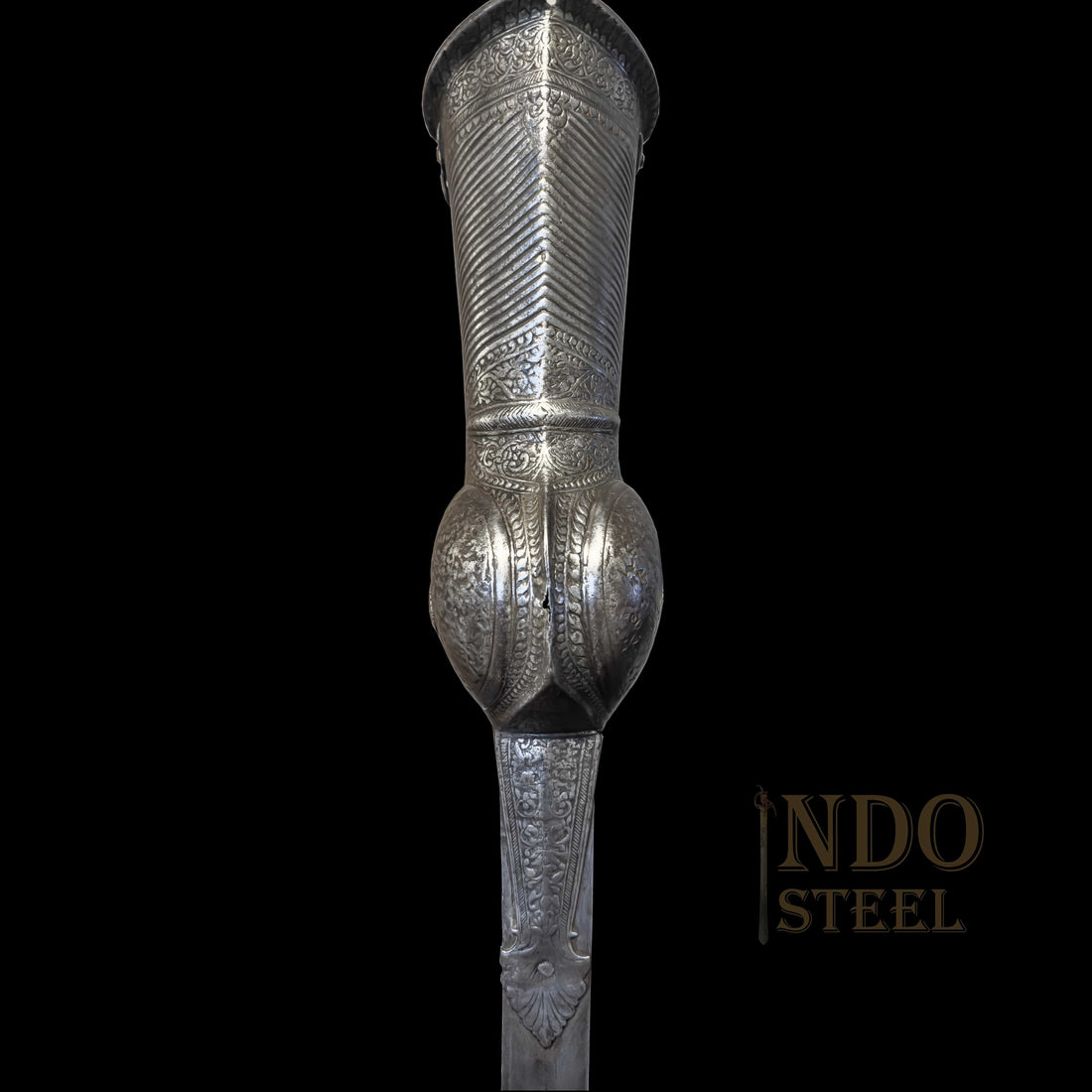
The Dandpata



The dand patta has roots in ancient India, with its design and use possibly evolving from other traditional South Asian weapons like the khanda (a double-edged straight sword).
The dand patta was primarily used by warrior castes in India, including the Rajputs and Marathas. It was an important part of their martial traditions and was often seen in the hands of highly skilled warriors. One of the most notable users of the dand patta were the Marathas, under leaders like Chhatrapati Shivaji (see third image (1630-1680)). It was used effectively in various battles (such as the battle of Pratapgad 1659) and became a symbol of Maratha martial prowess.
This image features a close-up view of the gauntlet hilt of a 17th-century dand patta. The hilt is elaborately designed with intricate patterns and embellishments. The main body of the gauntlet exhibits a diagonal ribbed pattern, while the lower part, which guards the hand, is adorned with ornate floral engravings. The craftsmanship suggests a high degree of skill, highlighting the weapon’s dual function as both a tool of war and a work of art.
This second image shows the full length of the dand patta, displaying both the gauntlet hilt and the blade. The hilt continues to showcase the same detailed craftsmanship, transitioning into a long, straight blade. The blade appears to be made of wootz steel, with a slight patina. The overall appearance of the weapon underscores its historical significance and the martial prowess of its users.
